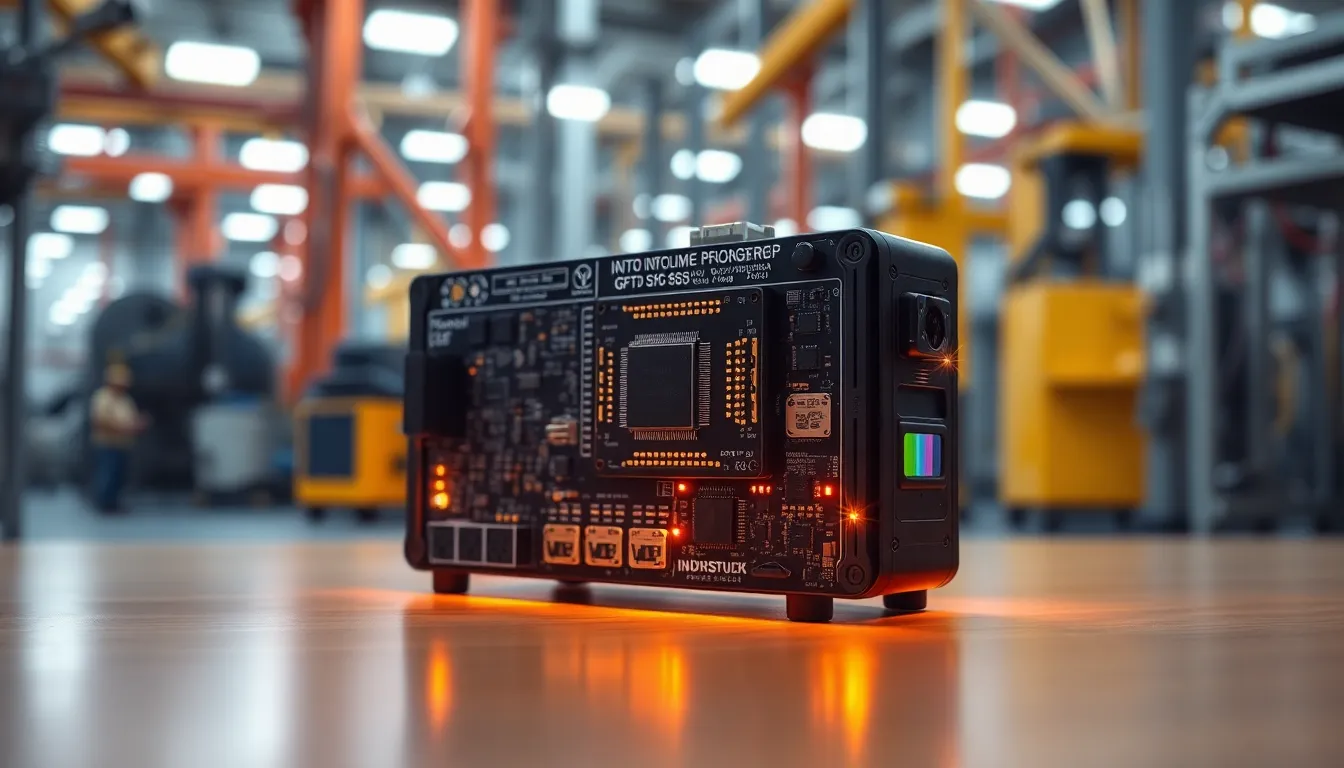Edge computing used to sound like a fancy tech term reserved for big corporations with deep pockets. But today it’s becoming more affordable and accessible, shaking up how data is processed right where it’s generated. This shift is transforming industries from smart homes to autonomous vehicles, making real-time decisions faster and more efficient.
So what’s behind this game-changing trend? A mix of smarter hardware, improved software, and clever networking has slashed costs and simplified deployment. Businesses no longer need to break the bank or wrestle with complex setups to tap into edge computing’s power. Understanding these factors reveals why edge computing is no longer just an option for tech giants but a must-have tool for innovators everywhere.
Understanding Edge Computing
Edge computing processes data near its source, reducing the need to send information to distant data centers. Many industries benefit from this technology by improving speed and lowering latency.
What Is Edge Computing?
Edge computing moves computing tasks from centralized clouds to local devices or nearby servers. This shift lets devices such as sensors, smartphones, and IoT gadgets handle data directly. It reduces delays caused by transmitting data over long distances. Processing data at the edge supports real-time decisions and acts as a foundation for applications like autonomous vehicles and smart homes.
Importance of Edge Computing in Modern Technology
Modern technology depends heavily on reliable and fast data processing, which edge computing provides efficiently. By handling data locally, it minimizes network congestion and decreases operational costs. Devices connected at the edge generate vast amounts of data, making centralized processing impractical. Industries like healthcare, manufacturing, and entertainment use edge computing to enhance responsiveness and data security without increasing expenses.
Key Factors That Have Made Edge Computing Cheaper

Several critical factors contribute to the reduced cost and increased accessibility of edge computing. These include technological advancements, manufacturing trends, and integration strategies that streamline deployment and operation.
Advances in Hardware Technology
Innovations in hardware technology have significantly lowered the cost of edge computing devices. Processors now offer better performance with lower power consumption, enabling more efficient local computation. Smaller form factors and enhanced energy efficiency contribute to easier deployment in varied environments. Additionally, the rise of specialized chips tailored for AI and machine learning tasks on edge devices improves processing speed while maintaining affordability. Continuous improvements in sensor technologies and storage solutions also reduce the expenses associated with acquiring and maintaining edge infrastructure.
Economies of Scale in Device Manufacturing
Mass production of edge devices drives costs down by spreading fixed expenses over larger volumes. Manufacturers benefit from improved supply chains and standardized components, which reduce per-unit prices. The widespread adoption of edge computing in areas like smart homes and industrial automation creates growing demand, fostering further cost reductions. Bulk procurement of key materials and streamlined assembly processes enable manufacturers to offer competitive pricing. The combination of increased production volume and optimized logistics supports more affordable edge device availability.
Cloud Edge Integration and Hybrid Solutions
Combining cloud and edge computing in hybrid models enhances cost efficiency and operational flexibility. Cloud providers offer scalable resources that complement localized edge processing, reducing infrastructure investments. Seamless integration tools and platforms simplify data management and application deployment across environments. These hybrid systems minimize bandwidth usage and latency by processing time sensitive data at the edge while leveraging cloud resources for heavy analytics. Such architectures lower overall expenses through optimized resource allocation and reduce complexity in managing distributed systems.
Factors Making Edge Computing Easier to Implement
Several factors contribute to the growing ease of implementing edge computing. These elements work together to lower barriers and accelerate adoption across industries.
Improved Software and Development Tools
Advancements in software frameworks streamline the creation and deployment of edge computing applications. Developers benefit from integrated tools that support rapid prototyping and testing directly on edge devices. Automated orchestration platforms simplify managing distributed systems by handling deployment, updates, and monitoring without manual intervention. Open-source libraries tailored for edge workloads have increased accessibility, enabling developers to build complex functionalities faster. These improvements reduce both time and technical complexity, making edge computing solutions more approachable for organizations of different sizes.
Standardization and Interoperability
Industry efforts to establish common protocols and interfaces have boosted interoperability among diverse edge components. Standard communication models allow devices and systems from various manufacturers to work together seamlessly. This uniformity lowers integration costs and risks by preventing vendor lock-in. Organizations gain flexibility in selecting hardware and software tailored to their needs, confident components will communicate effectively. Adhering to widely accepted standards also fosters a larger ecosystem of compatible tools and services, driving continuous innovation while simplifying implementation.
Enhanced Connectivity and Network Infrastructure
The expansion of high-speed networks, including 5G and fiber optics, strengthens edge computing by improving data transmission speeds and lowering latency. Distributed data centers positioned closer to end-users reduce reliance on distant cloud servers, enhancing real-time processing capabilities. Network advancements support reliable and secure connections essential for handling sensitive or critical workloads at the edge. Broad coverage expansions enable deployment in more locations, including remote or mobile environments. These infrastructure improvements enhance scalability and operational efficiency, reducing costs related to data transfer and network management.
Real-World Applications Driving Cost and Ease Improvements
Edge computing’s affordability and simplicity owe much to its growing use in practical, everyday technologies. These applications showcase how this approach streamlines processes and cuts expenses across several industries.
IoT and Smart Devices
The rise of IoT and smart devices plays a central role in making edge computing more accessible and cheaper. Millions of sensors and gadgets across homes and industries now perform local processing, which reduces reliance on distant data centers. This shift cuts bandwidth needs and lowers latency, improving real-time responses. Manufacturers benefit from standardized components that easily integrate with existing networks, lowering deployment costs. Developers rely on improved software tools designed for rapid edge application deployment, enabling faster innovation cycles. These advances support everything from smart thermostats to industrial monitoring systems, which handle data locally while syncing critical insights to the cloud.
Autonomous Systems and AI at the Edge
Autonomous systems utilize AI at the edge to enhance decision-making speed while controlling costs. These systems, including self-driving vehicles and drones, process vast data locally to avoid delays caused by cloud communication. They employ specialized AI chips that boost efficiency and reduce power consumption, making edge deployment viable. Manufacturers leverage hybrid cloud-edge models to allocate workloads, providing flexibility and further reducing expenses. Automated orchestration platforms simplify management of these distributed systems, increasing operational ease. The growing interoperability of hardware and software components also lowers integration challenges, enabling faster scaling across various autonomous applications.
Conclusion
Edge computing’s affordability and accessibility have transformed it into a practical solution for a wide range of industries. Continuous innovation in hardware and software, combined with improved connectivity and standardization, has lowered barriers to entry. This allows businesses of all sizes to harness the power of real-time data processing close to the source.
As edge computing continues to evolve, its cost-effectiveness and ease of deployment will only increase, driving further adoption and enabling new applications that demand speed, security, and efficiency. The future of technology clearly leans on the edge.












